Category: Hunting Blog
Trapping Success
Over the past weeks we have set many Duke cage and dog proof traps at The Proving Grounds. Even though fur prices are the lowest they’ve been in decades, we are trying to do our part to manage the local predator population. We have already removed 28 nest predators and there are still two weeks left in trapping season!
Even though the season is not yet over, it is obvious that our trapping efforts have been successful. How do we measure that success?
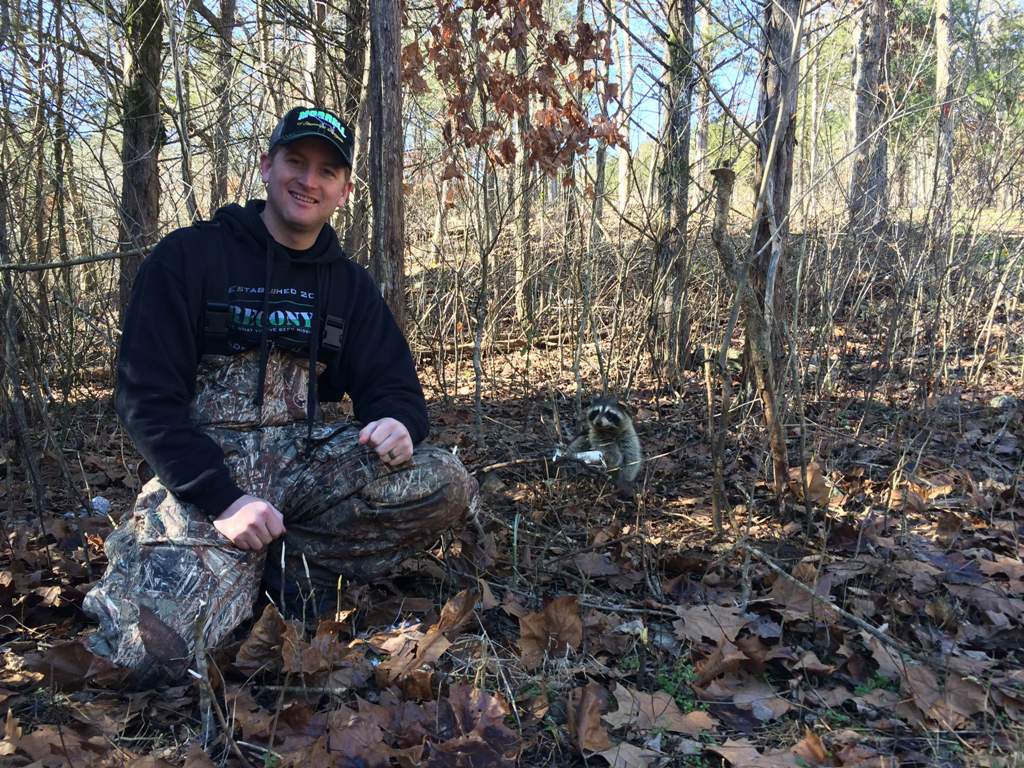
A dog proof trap catches another nest predator, helping the local turkey population.
Every predator trapped is weighed and sexed. Over multiple seasons the information we’ve recorded reveals several things. First, the average weight of predators has decreased. Second, a majority of the predators we trap are males.
As managers we consider this success. By trapping each year we have removed many of the resident predators. We are now catching young males that are moving onto the property to fill these voids. This is why we continue to trap each year. If we stopped trapping it wouldn’t take long before predator numbers spiked.
While trapping at The Proving Grounds, we have watched the predator and prey populations change. Last year we removed over 50 nest predators. That is 50 hungry mouths that did not find turkey eggs. This year the turkey population is the best it has ever been and we helped through trapping!
Whether you measure your trapping success through your records or an increase in deer and turkey numbers, keep doing your part to balance predator/prey relations.
Enjoying The Trap Line,
Daniel
Deer Hunting Reflections
As the close of season draws near, it is almost time to slow down and reflect on the blessings of the season. Those blessings are not always wrapped up in harvests. Much of the time spent reflecting is looking back at the memories shared with others and lessons learned from the Creator while afield.
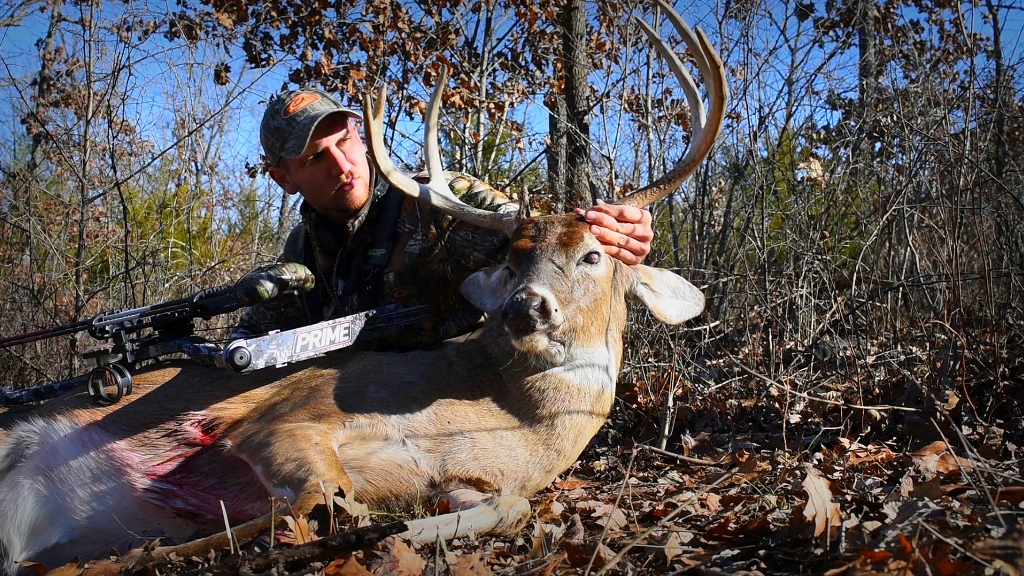
Reflecting on the late season harvest of a buck we called “Gappy.”
I recently moved to the Midwest from the mid-Atlantic region and some noticeable differences in hunting strategies became apparent to me. While back east, I had the opportunity to hunt in many urban areas. At first it was a new style of bow hunting for me. It was not only unique and intriguing, but offered new challenges. I found myself taking less time to strategize about food sources than ever before. I spent the majority of my time focused specifically on bedding and bottlenecks. This was due to the lack of cover available. I identified this as the limited resource and took advantage of it. I noticed many times deer feeding in ball fields, golf courses, or even backyards. Obviously I wasn’t able to focus hunting efforts there, so my approach differed from hunting in the mid-west.
This year our approach hunting throughout the Midwest changed drastically as the season progressed. Early season our focus was on white oak acorns, then transition areas, and then back to food sources (which depended on the weather to determine what food source was preferred at that time). Differences like these can be seen throughout much of the whitetails range, different properties within the same region can witness different types of deer activity. Differences in deer activity where you are hunting can present a unique set of challenges. These challenges force us as hunters to strategize and execute plans with the fullest intention of being successful.
No matter the location or size of your Proving Grounds, it offers areas or times of the year when you can be successful. Your property may hunt best during early season or perhaps it’s a small property with a main travel corridor and hunts extremely well during the rut. Whatever strength it may have, take time to note the patterns you see on your Proving Grounds. Begin to strategize how you will approach the next hunting season. Plan out your management projects for the year and start preparing for the season opener! If you wish to have different results in the hunting seasons to follow, then a new approach should be taken. Make the most of this period of reflection!
Enjoy your season of reflection,
Matt
Benefits Of A Pre Established Hit List
As the end of season nears, the action can still be hot in many areas. Cooler temperatures are finally settling into our area, pushing deer to feed heavier than we experienced all fall. In response to this the Reconyx cameras overlooking Eagle Seed Broadside and soybeans are getting a workout. This information allows us to close the distance on any hit listers that are regularly feeding in our plots.
Although we are hunting the same deer from the beginning of season their appearance may have changed. For instance, a 4.5 year old buck we call Gumby has been showing up across The Proving Grounds throughout the season. Gumby is a hit list buck and showed every sign of a mature buck at the start of season. His chest merged evenly with his neck and had a large pot belly. Now, Gumby looks like a different deer, besides the fact that he has busted multiple tines off his rack. His large belly is no longer present and his neck has thinned down so much you could easily misjudge his age if you saw him for the first time, potentially passing on this mature buck.
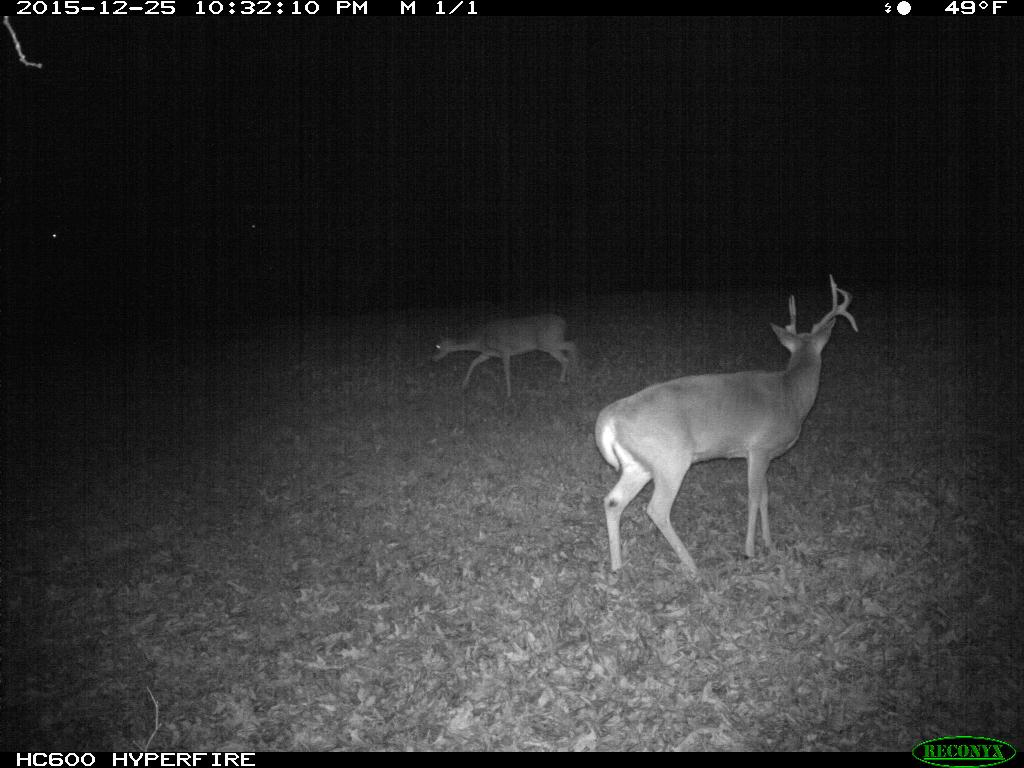
Gumby during late season, take notice of his neck and other body characteristics.
Establishing a hit list prior to season allows us to identify and watch bucks progress as the season continues, no matter what shape we may find them in. Just because Gumby does not currently sport the normal body characteristics of a 4.5+ year old deer, does not mean he is taken off the hit list.
Be sure to watch the bucks that frequent your property closely from the beginning of season all the way thru. This will help to ensure that mature bucks who are worn down from the rut don’t get a pass during late season!
Finishing the season strong,
Matt
Warm Winter Food Sources
Temperatures have been extremely warm throughout December here at The Proving Grounds which has made for some tough hunting. Typically December can be a great month to pattern deer! Temperatures normally are dropping as winter sets in and deer head to food sources like soybeans and corn. With the temperatures we’re experiencing this winter, we’ve had to change from our usual late season setups.
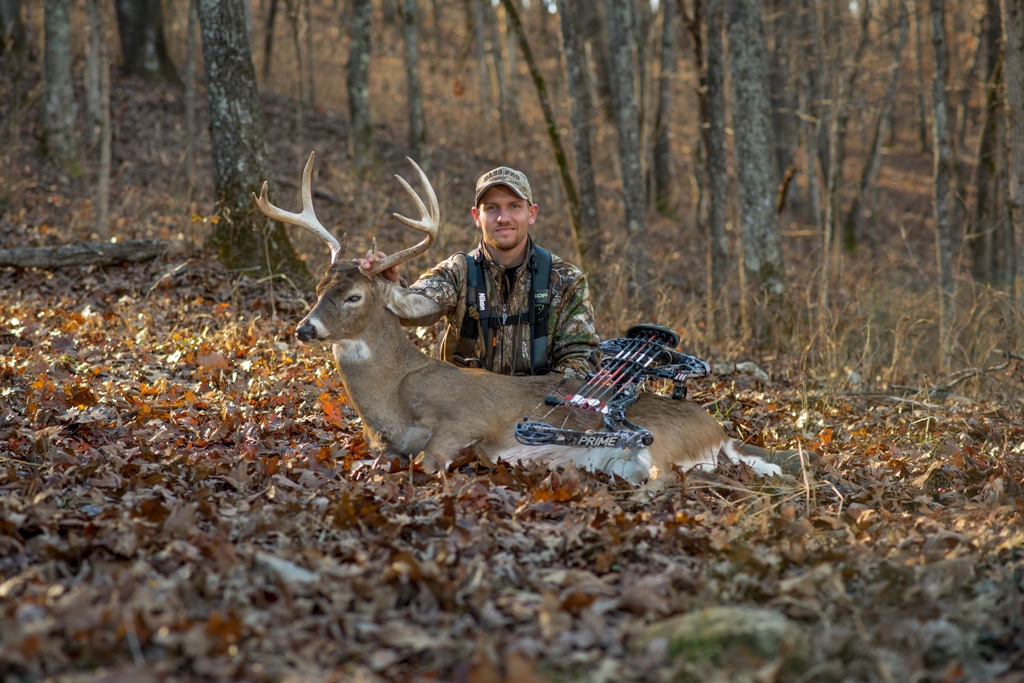
Matt Dye was able to harvest “Gappy” after we found a pattern of deer using a ridge with known red oak acorns on the ground.
Food sources like Eagle Seeds Broadside blend, clover, or acorns might be the ticket to success during warm years like we’re experiencing now. We’ve been watching our Reconyx cameras a lot lately trying to find the food source with the most activity and red oak acorns seem to be the best! Red oak acorns are more acidic than white oak acorns. Therefore, deer don’t usually eat them as much during the early fall. As the fall progresses the red oak acorns break down, making them less acidic and more favorable to deer. Here in southern Missouri, we had a big crop of red oak acorns and we’ve spent a lot of time hunting around them. Last week Matt and I had a great morning in some red oaks when Matt shot Gappy, a big wide 8 point.
Don’t be afraid to change your tactics at any point during the season! As the weather changes during the fall, your hunting tactics will most likely change as well!
Daydreaming of whitetails,
Adam
Fur Prices And The Effect On Predator Removal
Winter is a great time of year for hunters, trappers and outdoor enthusiasts! Temperatures are cool, ticks aren’t active and there are so many outdoor activities to do! One of our favorite things to do during the winter months is set out our Duke traps and remove predators. In Missouri furbearer season is open from November 15 to January 31 and we take full advantage of it. Balancing the predator/prey relationship is an important part of wildlife management on every property.
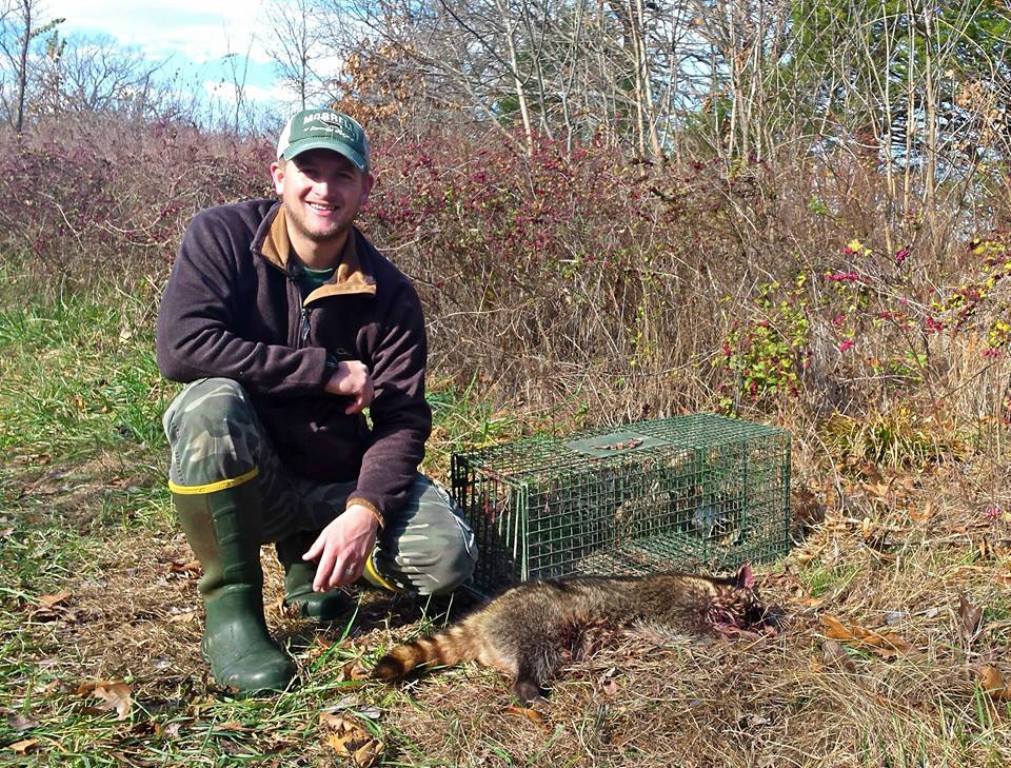
The first raccoon of the year was caught recently in a Duke cage trap.
Fur prices are the lowest they have been in decades. When fur prices drop this low, fur trapper numbers also drop. This means there are fewer people removing predators throughout the whitetails range. Higher numbers of predators means lower numbers of prey species like deer, turkey, and quail. It’s time for wildlife managers and hunters to step up and fill the void left by lower numbers of fur trappers.
One of the easiest ways to remove predators is setting Duke cage traps or DP’s (Dog Proof). These traps are inexpensive but very effective. We set several of these traps throughout the property every trapping season and have tremendous results with removing predators like raccoons and opossums. Trapping is a great outdoors activity during the winter months. It’s not only enjoyable but very rewarding for both the trapper and the prey!
Daydreaming of whitetails,
Adam
Stressed Out!
Without a shadow of a doubt, the rut is an extremely stressful period for white tail deer, especially bucks. Bucks are on their feet traveling miles each day in search of receptive does. In addition to this, bucks commonly fight during this time of year. A large amount of energy is used during events like this. These types of activities begin to wear down the physical characteristics of bucks specifically. We commonly see from hunting observations and Reconyx trail camera photos drastic weight loss, leg injuries, blindness, and scars across their bodies.
As land managers we can be proactive and provide quality forage that will help bucks recover weight losses that occur during the rut. As soon as the post-rut ends there is a large push for a protein and carbohydrate rich diet to regain weight and energy that will help get them through the winter months. We plant Eagle Seeds Broadside in our plots to provide the quality forage during the fall and winter. In addition, these plots make great hunting locations!
Growing Deer together,
Matt
Transitioning Deer Behavior Means Changing Tactics
Across most of the whitetails range firearms seasons have begun. Here in Missouri we are right in the middle of gun season. We have been hunting hard and pulling cameras cards but have not seen a lot of chasing activity. With these observations from the Summit Stands and Reconyx cameras we tend to classify this time of the rut as the lockdown phase. This simply means buck movement has slowed down as they are tending does until they are bred. Does are receptive for a 24 – 48 hour period. Any given buck may be locked down for that amount of time before he goes in search of another doe. With most does being receptive it may not take long to find the next doe that may lock a buck down for another extended period of time.
This may seem as a dim outlook for hunters who are afield this week. However, this doesn’t last long. As we enter into the later part of November bucks tend to get back on their feet, moving heavily in search of the remaining receptive does. Sometimes this post-rut activity can be very intense as bucks are desperate to find does. As the rut progresses there are less and less receptive does, making it potentially difficult to find them. To help the search for receptive does, scraping activity increases drastically during this period!
To take advantage of this shift in behavior, we will soon be focusing our efforts on hunting scrapes and travel corridors again, a similar strategy to our pre-rut tactics. The deer behavior and movement is similar, so we will hunt similarly. Our Reconyx cameras are still on scrapes, so as soon as they begin to light up we will be close by! In addition to hunting these scrapes we will be keeping an eye on our Eagle Seed Broadside plots. Temperatures are forecasted to drop so does will be in search of quality food increasing the chances of drawing a mature buck into the plots!
Chasing whitetails together,
Matt
Hunting The Rut: The Lockdown Phase
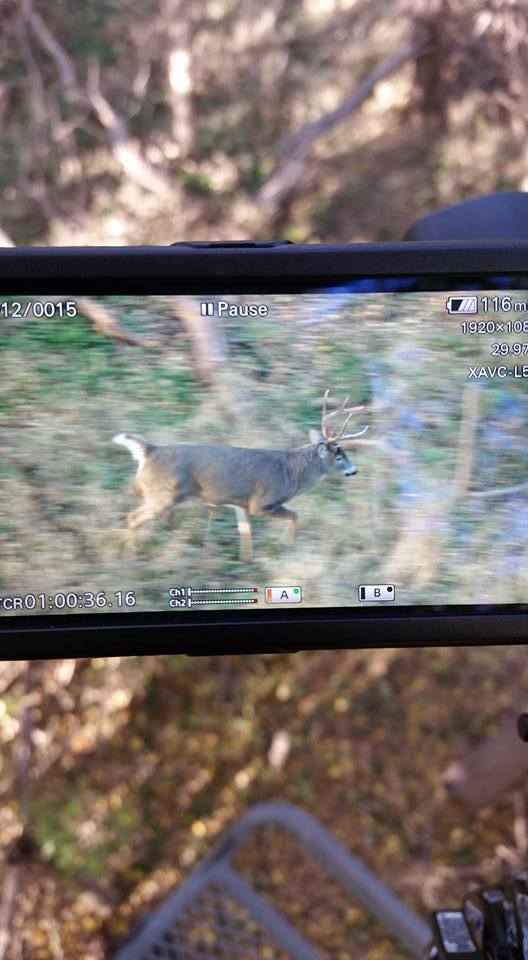
While hunting in Kansas was saw the nice looking buck.
Adam and I are rolling back to The Proving Grounds from our trip to Kansas. We hunted hard for six days with lots of deer activity seen throughout the week. If you have been out in the woods, you may be experiencing much of the same. Unfortunately, we are returning without a mature buck in the truck despite hunting on some great ground in early to mid-November.
Most of the deer activity we saw was does slipping through the timber in an attempt to hide from pesky bucks or young bucks cruising with their noses on the ground. This action was quite intense and kept us on our toes. However, this action was also draining! At this time of the year bucks are starting to become locked down with does. Does are receptive for a 24 to 48 hour period. During this time bucks will stay close to the receptive doe and not leave her until she is bred, making this a potentially tough time to hunt since bucks aren’t up and moving as much as the chase phase.
In an instant, the mature buck can bred his doe that has kept him locked down and move on in search of another. When this occurs it can make putting in lots of time in a Summit Stand pay off in a big way. However, when the weather is unseasonably warm like this past week in Kansas and bucks are locked down with does, the hunting suddenly becomes much tougher. Does do not move as much because of the weather and the mature buck movement will decrease as well.
Despite the lockdown phase of the rut and warmer temperatures, the morning and late afternoon action, when temperatures were the lowest, kept us entertained. If you are finding yourself putting in lots of time in the stand recently, hang in there! Action from a hit list buck can come your way in an instant. Remember that does are seeking refuge from bucks, so key in to the areas with thick cover. Does will be bedding in the escape cover and in a matter of time, so will the bucks!
Chasing whitetails together,
Matt
After The Shot: Venison
At this time of year we frequently are asked questions related to how to handle a deer after harvest. Answering these questions can cause a bit of controversy because the way we process our deer after harvest is different from the way many hunters have traditionally been taught. Each region of the country has different methods on how they age and store their venison. What we do works for us, is simple, inexpensive, and provides good quality meat.
The basic answer to the “how long” and at “what temperature” questions is to remind hunters to use common sense. If you’re hunting in the southern portion of the United States on a warm day (70 degrees or higher) you don’t want to leave the deer in the heat and sunlight for very long. Hunters harvesting deer in colder climates will have a longer window before having to worry about getting the deer field dressed and in the cooler. In colder regions hunters have to worry that their deer might freeze in the field, which means the meat will not spoil but freezing may toughen it up.
We don’t field dress our deer. There are three reasons for this: we are close to our “skinning shed” so there is minimal time added for transport after harvest; cleanliness – this eliminates any concerns over the exposed meat getting dirt or debris on it in the field; and the need to collect “data” on the deer. After retrieving the deer we bring it back to the shop for weighing. We have a wench that pulls the deer up on a hanging scale. The weight of the deer is part of the data collection that is used to analyze the health of our local deer herd. (After all, Dr. Woods is a wildlife biologist. Gathering data is as critical to him as actually harvesting the deer!) To learn more about the data that Dr. Woods likes to have collected, click HERE.
After weighing the deer it is eviscerated using the technique shown in this video. There is a plastic tub (gut bucket) placed below the deer so that the innards can be cutaway and dropped cleanly into the tub. During this process it is important to pay attention to sanitation – keep your knife clean, try not to bust the rumen or intestines, etc.The next step is to skin the deer to get to the meat. Here’s a video where you can see the guys in the process of skinning one out.
If you’ve harvested a trophy buck and want to cape it out we have a good instructional segment that begins at the five minute mark in this video.
Removing the meat is the next step. We cut out each individual muscle which is very easy and makes for better tasting meat. Watch this video to see the step by step process.
After removal, we store the meat on ice in clean coolers for up to four days. The length of time to keep it on ice is arbitrary. We do not attempt to age the deer meat. It’s just not practical given that we do not have a walk-in cooler or second refrigerator. Nor do we think the meat is improved by aging. The Clemson University Extension explains it well: “Do not age any game carcass if it was shot during warm weather and not chilled rapidly, if the animal was severely stressed prior to the kill, if gunshot areas are extensive, or if the animal was under 1 year of age. Aging is not recommended for carcasses with little or no fat covering because they may dry out during aging, and are more susceptible to deterioration through microbial growth. If the meat will be ground into sausage, aging is unnecessary.”
Next, we bring the meat into the kitchen for further processing: removing the fat and connective tissue (the long streaks of white/silvery tissue running in and around the various muscle meat groups). The connective tissue is one of the primary culprits that make wild game tough or have an unpleasant “gamey” taste.
Once the connective tissue is removed, it’s easy to further process the meat into steaks or put it into the grinder. The final step is vacuum packaging the venison. Many years ago we wrapped the venison in butcher/freezer paper but found that it would often get freezer burn after 8 months. With vacuum packaging we rarely have any issues with freezer burn.
The Clemson University Cooperative Extension has produced a well thought out guide for hunters at this link. It is one of the best we’ve seen on the subject. I strongly encourage you to click through, read, and print it out for future reference.
No matter where you are or how you choose to process your deer meat, please make sure to follow basic sanitation and food safety practices. Remember, after the shot – it becomes meat for the table!
Growing (and eating) Deer,
Tracy Woods
How Photoperiod Affects The Rut
There have always been discussions among hunters to what influences the timing of the rut. There are many theories out there, but none provide the factual information based off of physiological processes that occur in deer like photoperiod. Photoperiod is simply the change in the amount of darkness throughout a given day. Summer days are longer than winter days, based on the amount of light there is each day at these times of year. Deer take notice of these photoperiod differences throughout the year and as a result they trigger behavioral and bodily changes.
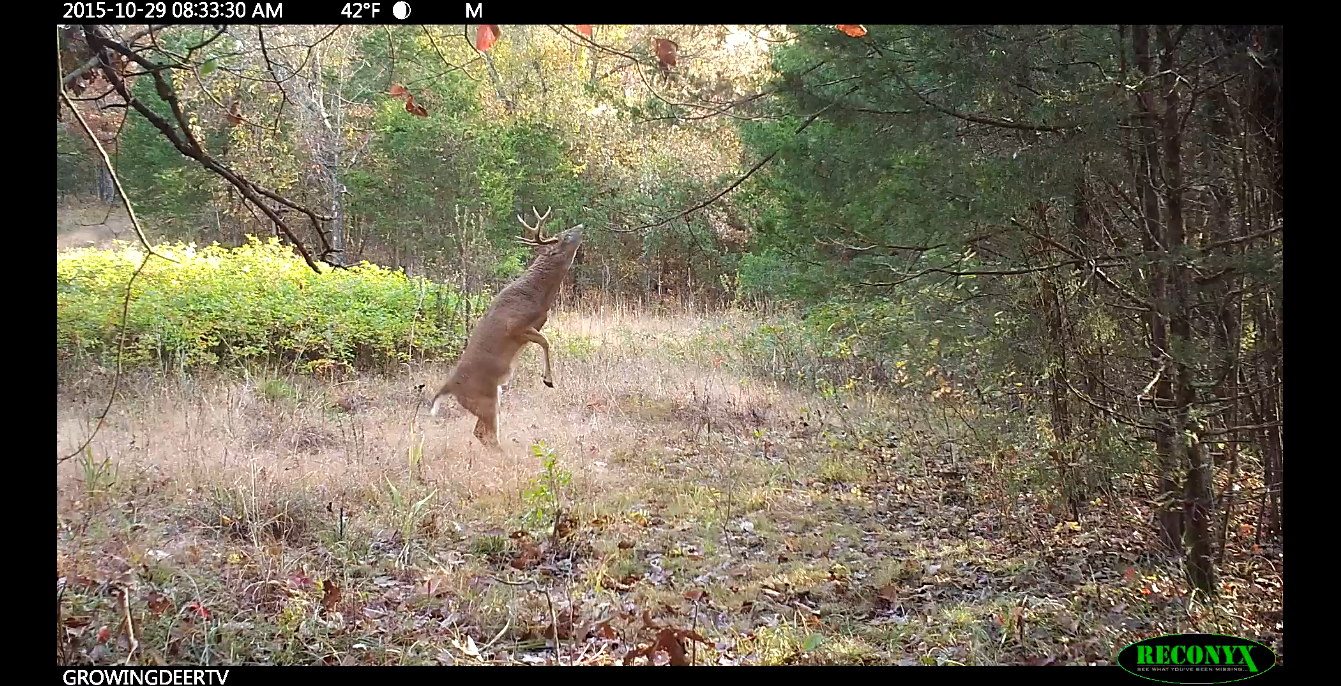
A mature buck we call Herman is active during daylight working a scrape during late October.
As light fades from late summer into fall, deer sense this through nerves in their eyes. These signals travel into the brain and determine the amount of melatonin that is produced. When melatonin is produced it then creates a spike in testosterone in bucks and estrogen in does. It is widely known that both testosterone and estrogen are hormones that influence reproductive behavior.
As you know from hunting through October and the time leading into the peak of the rut, bucks and does will exhibit rutting behavior. This can be observed through scraping activity. During early October when the days are longer, with less darkness, the scraping activity is less. However, during late October before actual breeding begins, scraping activity is extremely high. This is not simply ironic, as darkness increases during the month rutting behavior increases as well.
Another important note on photoperiod is that the rate and timing of the photoperiod changes do not differ from year to year in a given location. This is why deer behavior on your Proving Grounds occurs routinely each year. You may not experience the same level or intensity of action each year, but remember weather determines daily deer movement. Warm spells during November do not mean does will not get bred, it may simply mean you may not experience the same rutting activity, but rest assured, the rut still occurs at this time.
How does this help you as a hunter? Now you know what influences the timing of the rut. Most importantly you know that the influencing factor, photoperiod, does not change from year to year. As you prepare for the rut and schedule time off or time afield, I suggest you do so at the peak of pre-rut activity. The odds are in your favor the most at this time because bucks are chasing and have not yet been locked down by receptive does, offering more opportunity for you to cross paths with one of your hit list bucks. I hope you take the time to study and further read on photoperiod as it also determines many other important events for whitetails each year.
Growing Deer together,
Matt Dye



